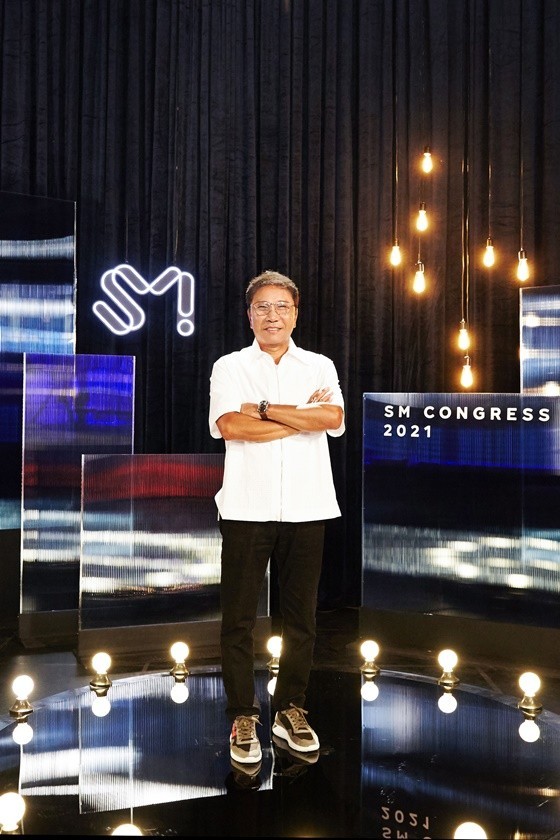Analyzing Lee Soo-Man 's Narrative

Lee Soo-man’s story is not that of a mere entertainment executive. He is a “producer who designs the future.” Not as a singer, but as a producer, a planner, an architect of an industry. From his hands emerged the K-pop system that reshaped the paradigm of the global music market.
When we talk about K-pop today, concepts like the trainee system, conceptual planning, and global expansion are taken for granted. But if we ask who pioneered these ideas, the answer is undoubtedly Lee Soo-man.
He was the first in Korea to create the “planned star” system. After shifting from singer to producer in the 1980s, his time studying in the U.S. exposed him to MTV and the Billboard charts. There, he sensed a new era: not just singers who could perform well, but artists who could become brands. Believing Korea needed this model, he founded SM Planning (now SM Entertainment) in 1989.
His first conclusion was the “Korean-style idol system.” A rigorous trainee program, team-based planning with distributed roles, character-driven concepts, and music and performances embedded with storytelling. From this blueprint came H.O.T., followed by TVXQ, Girls’ Generation, Super Junior, EXO, NCT, and aespa, building the continuous current we now call K-pop.
But Lee’s vision went beyond music. He placed SM’s artists into an expanded shared universe: KWANGYA. With aespa, he introduced a metaverse-based narrative distinct from traditional K-pop groups. Through the concept of “ae” (avatars), he connected reality and the virtual, expanded SM’s IP with AI and blockchain storytelling, and positioned KWANGYA as the shared world where SM’s artists exist together.
As aespa proved, he wasn’t just producing music—he was building “expanded IP.” Some fans jokingly asked, “Where exactly is KWANGYA? Somewhere in Cheongdam-dong?” To which Lee replied cryptically, “KWANGYA is philosophy,” elevating the world into something more than a concept.
His attention has always been fixed on the “next era.” Beyond K-pop, he envisioned a future where entertainment converges with technology. He invested in drone companies to reinvent stage design, partnered with metaverse firms to expand IP into virtual realms, and explored AI voice synthesis and virtual human technologies to create entirely new forms of artists.
Among his recent ventures, the most notable is A2O, an idol group designed for the Chinese market. He localized the essence of the K-pop system while applying the same rigorous trainee training and IP branding strategies. Even before debut, A2O built fandom on platforms like Weibo and Xiaohongshu, and with the inclusion of an AI-based virtual member, they tested the possibilities of next-generation idols.

A2O is no longer just an “experiment”—it has become a successful global project. Member A2O MAY has gained explosive popularity in China, and as rookies they have already made the rare achievement of entering the Billboard charts. With a strong local fandom, discussions of an Asia tour are underway. If EXO-M once symbolized K-pop’s expansion into China, this time the current is reversed: a group born in China is now poised to flow back into Korea.
Lee’s vision doesn’t stop there. Consider NVIDIA CEO Jensen Huang’s idea of “Physical AI”—AI not confined to the virtual, but fusing with the real world. Imagine AI analyzing an artist’s movements to optimize performance, robots and drones shaping the stage, and virtual members performing alongside human idols in real time. This is the kind of stage Lee has long been envisioning.

Lee Soo-man opened a road where none existed, turning the possibility of the idol system into reality. Now, by merging it with Physical AI, he dreams of reshaping the very landscape of the music industry. The success of A2O is more than the story of one group—it shows his narrative is still unfolding.
From KWANGYA to the metaverse, from AI to the physical world, Lee’s story has never been about repeating past successes. It is about constantly writing toward the “next era.” And the reason his narrative remains fascinating is simple: it isn’t over yet.
Seungho Shin, shshin@kmjournal.net
- [K Star Column] ① IU, A Storyteller Who Holds Both Light and Shadow
- Director Dongha Oh Wins Four Awards at AI International Film Festival with ZERO
- PLAVE Shares Heartwarming Chuseok Greetings: “Have a Wonderful Holiday, PLII~!”
- Reality Meets Virtual: MBC Virtual Live Festival 2025 Opens with Isegye Idol’s ‘Stargazers’ Shining at the Peak
- BTS’s RM to Deliver Keynote at APEC CEO Summit...Showcasing K-Culture’s Soft Power on the World Stage

![[동학] 카카오톡 친구탭, 결국 12월 롤백… “격자형 피드는 선택 옵션으로”](https://cdn.kmjournal.net/news/thumbnail/custom/20251126/5517_10550_1119_1763853080_120.jpg)


![[테크 칼럼] 제미나이3, GPT-5.1을 넘다…AI는 이제 ‘일을 대신하는 시대’로 간다](https://cdn.kmjournal.net/news/thumbnail/custom/20251126/5457_10454_4847_1763621329_120.jpg)





